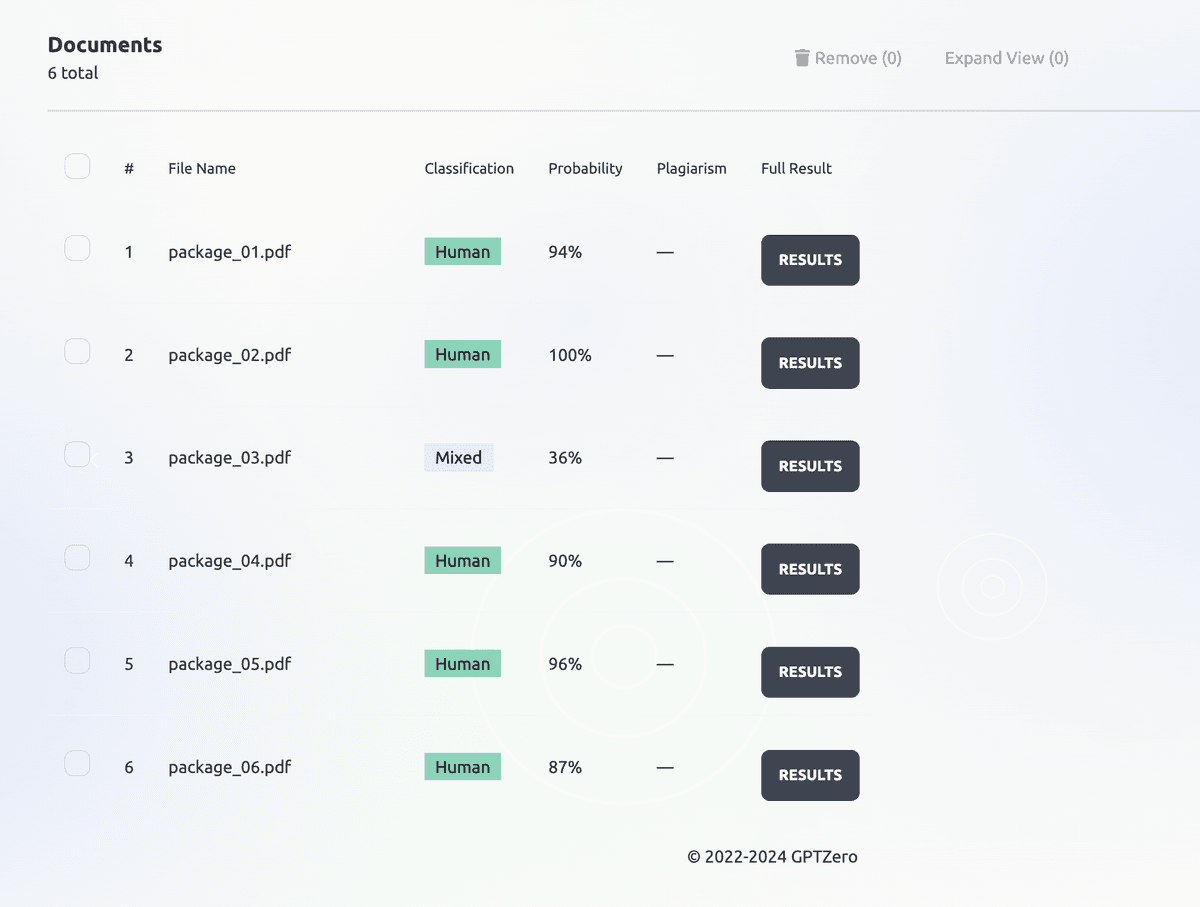

Interview human beings
Not ChatGPT
Get More with Behind the Scenes AI Detection
Integrate into your ATS with our API
Our public REST API is the same one that powers our web application, so you know we’re eating our own dogfood. Our response time averages 0.4s for a 700 word document.
curl --request POST
--url https://api.gptzero.me/v2/predict/text
--header 'Accept: application/json'
--header 'Content-Type: application/json'
--header 'x-api-key: '
--data '{
"document": "string",
"version": "string"
}'GPTZero reviews
“The best AI checker"according to our customers and communityGPTZero was the only consistent performer, classifying AI-generated text correctly. As for the rest … not so much.
GPTZero has been incomparably more accurate than any of the other AI checkers. For me, it’s the best solution to build trust with my clients.
This tool is a magnifying glass to help teachers get a closer look behind the scenes of a document, ultimately creating a better exchange of ideas that can help kids learn.
The granular detail provided by GPTZero allows administrators to observe AI usage across the institution. This data is helping guide us on what type of education, parameters, and policies need to be in place to promote an innovative and healthy use of AI.
After talking to the class, each student we compiled with GPTZero as possibly using AI ended up telling us they did, which made us extremely confident in GPTZero’s capabilities.
Sign up for GPTZero. Its feedback aligns well with my sense of what is going on in the writing - almost line-for-line.
I'm a huge fan of the writing reports that let me verify my documents are human-written. The writing video, in particular, is a great way to visualize the writing process!
Excellent chrome extension. I ran numerous tests on human written content and the results were 100% accurate.
Outstanding! This is an extraordinary tool to not only assess the end result but to view the real-time process it took to write the document.
GPTZero is the best AI detection tool for teachers and educators.
FAQs about GPTZero
Everything you need to know about GPTZero and our ChatGPT detector.
Can’t find an answer? You can talk to our customer service team.
How can employers detect if a candidate used AI in their resume or job application?
AI-generated resumes and cover letters tend to sound overly polished yet impersonal, reusing generic phrases and skipping specific achievements. GPTZero highlights where AI is most likely present, helping you see which applications reflect genuine effort.
Can GPTZero screen multiple job applications at once?
Yes. Recruiters can upload entire batches of applications and instantly see which were likely written with AI.
Does GPTZero support different file types for recruiting applications?
Yes. GPTZero supports the most common file formats recruiters receive, including PDF, DOCX, and TXT files.
How much does GPTZero's AI detection solution cost?
We offer a free version of quick scans, plus premium plans that distinguish between light AI assistance and fully AI-written submissions.
How can employers deal with excessive volumes of AI-generated applications?
AI tools have made it easier for candidates to mass-apply. GPTZero helps you quickly filter out AI-written applications so you can focus on the most authentic submissions.
What should employers do if a candidate has used AI to complete an application?
We recommend looking at the context in which AI was used. A candidate might have used it to fix grammar, or they could have generated an entire cover letter with fabricated details. GPTZero helps you gauge the level of AI involvement so you can make an informed decision.
How can employers encourage candidates to use AI responsibly?
Be transparent in job postings about your policy on AI. Let candidates know you use GPTZero, which sets expectations upfront and encourages authenticity.

